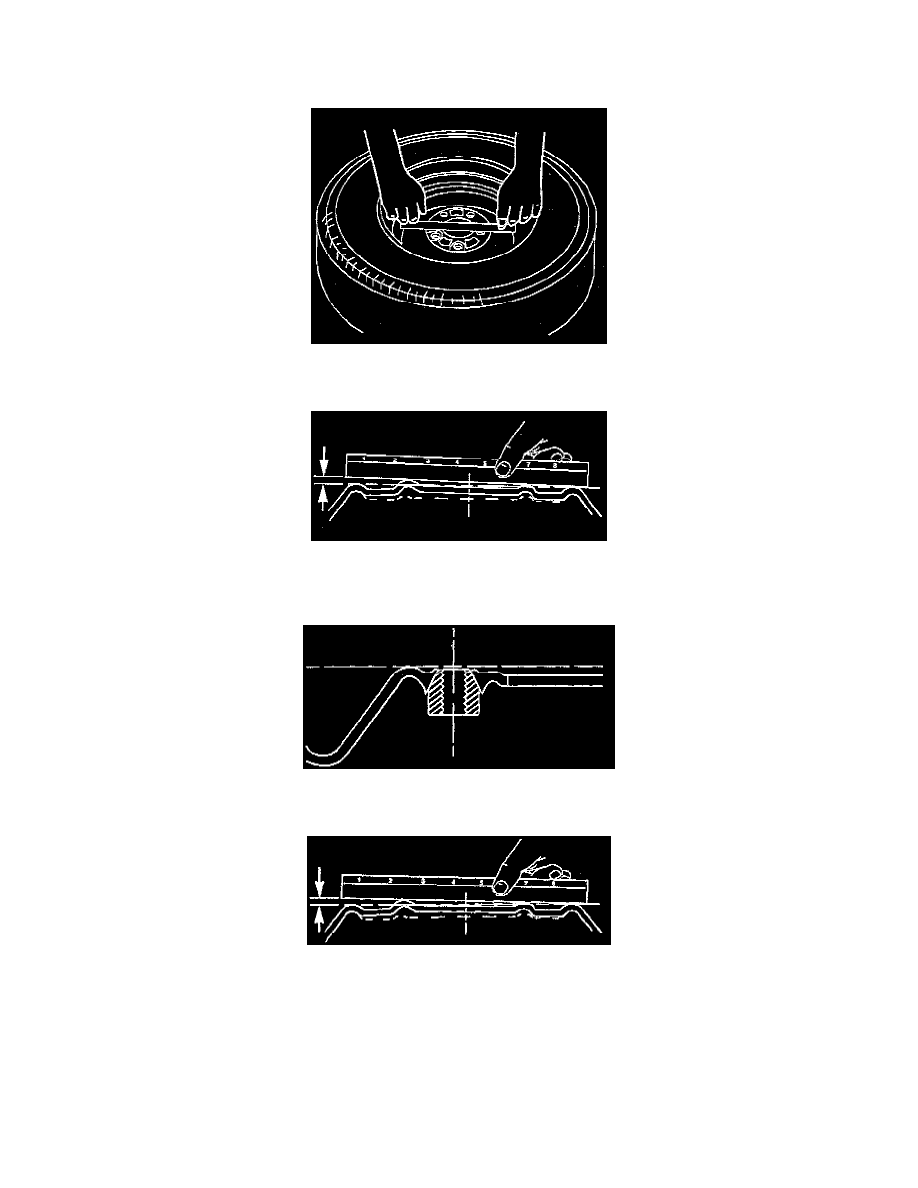Express 1/2 Ton Van V8-305 5.0L VIN M SFI (1998)

Wheels: Testing and Inspection
It is necessary to replace any wheels which are bent, dented, or which have excessive lateral or radial runout. Also, wheels with runout greater than
specified may cause objectionable vibrations.
1. Use a straight edge 203-229 mm (8-9 in) long. Place the straight edge on the wheel inboard mounting surface. Try to rock the straight edge up and
down within the mounting surface.
2. Repeat this procedure on at least three or four different positions on the inboard mounting surface.
^
The outer ring of the mounting surface normally is raised above everything inside the mounting surface.
^
The mounting surface will be raised above the outer ring the wheel mounting surface has been bent on a tire changer.
3. Inspect the mounting wheel/nut holes for damage caused from over-torquing the wheel nuts. Inspect for collapsed wheel/nut bosses. Inspect for
cracked wheel bosses.
NOTICE: The use of aftermarket reverse-type wheels, designed to extend the wheel away from the body, will increase the scrub radius. An
increased scrub radius may greatly increase steering effort and reduce hub bearing life.
Important:
^
Replacement wheels must be equivalent to the original equipment wheels in the following ways:
-
Load capacity
-
Wheel diameter
-
Rim width
-
Wheel offset
-
Mounting configuration
^
A wheel of incorrect size or type may effect the following conditions:
